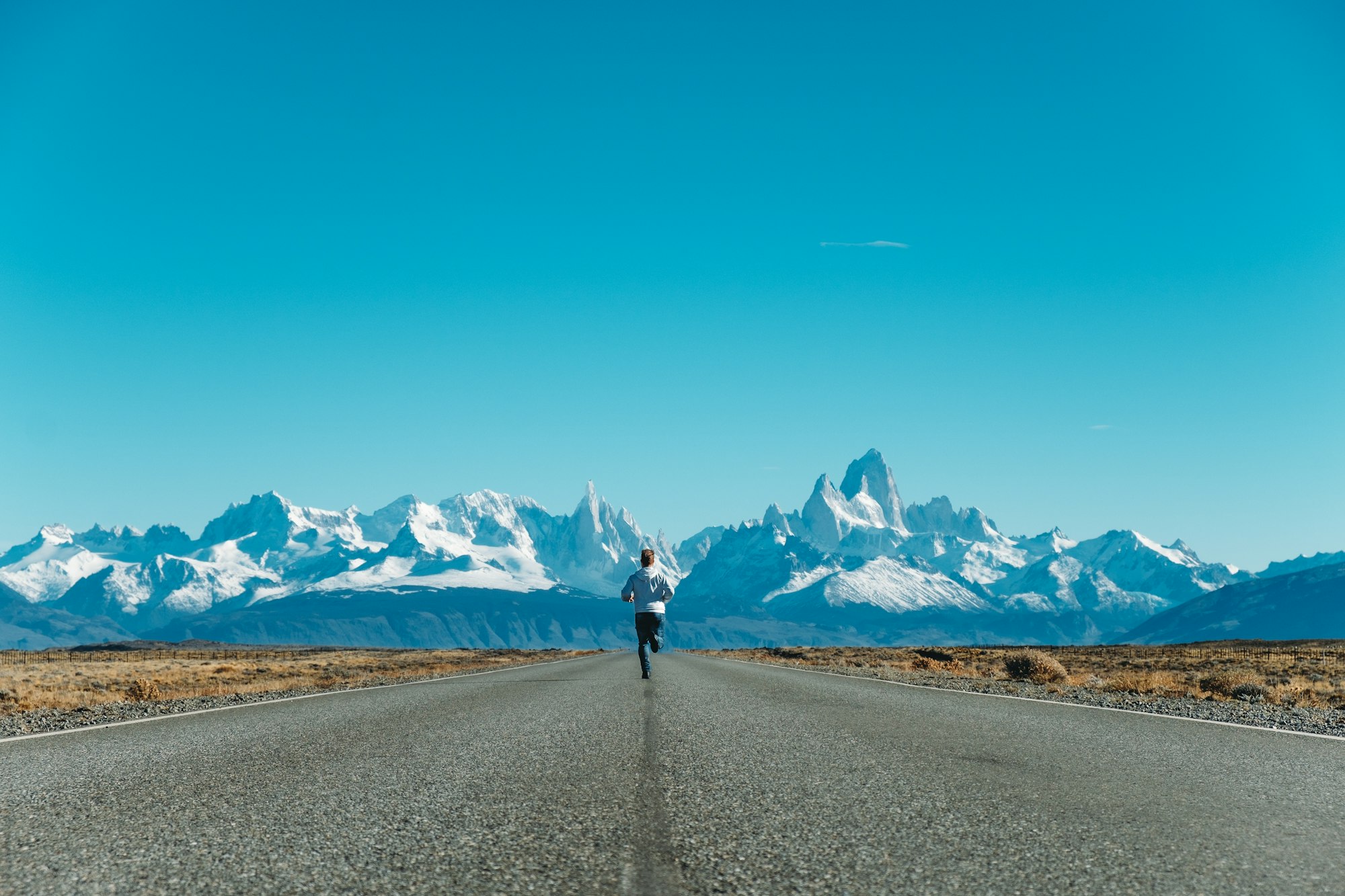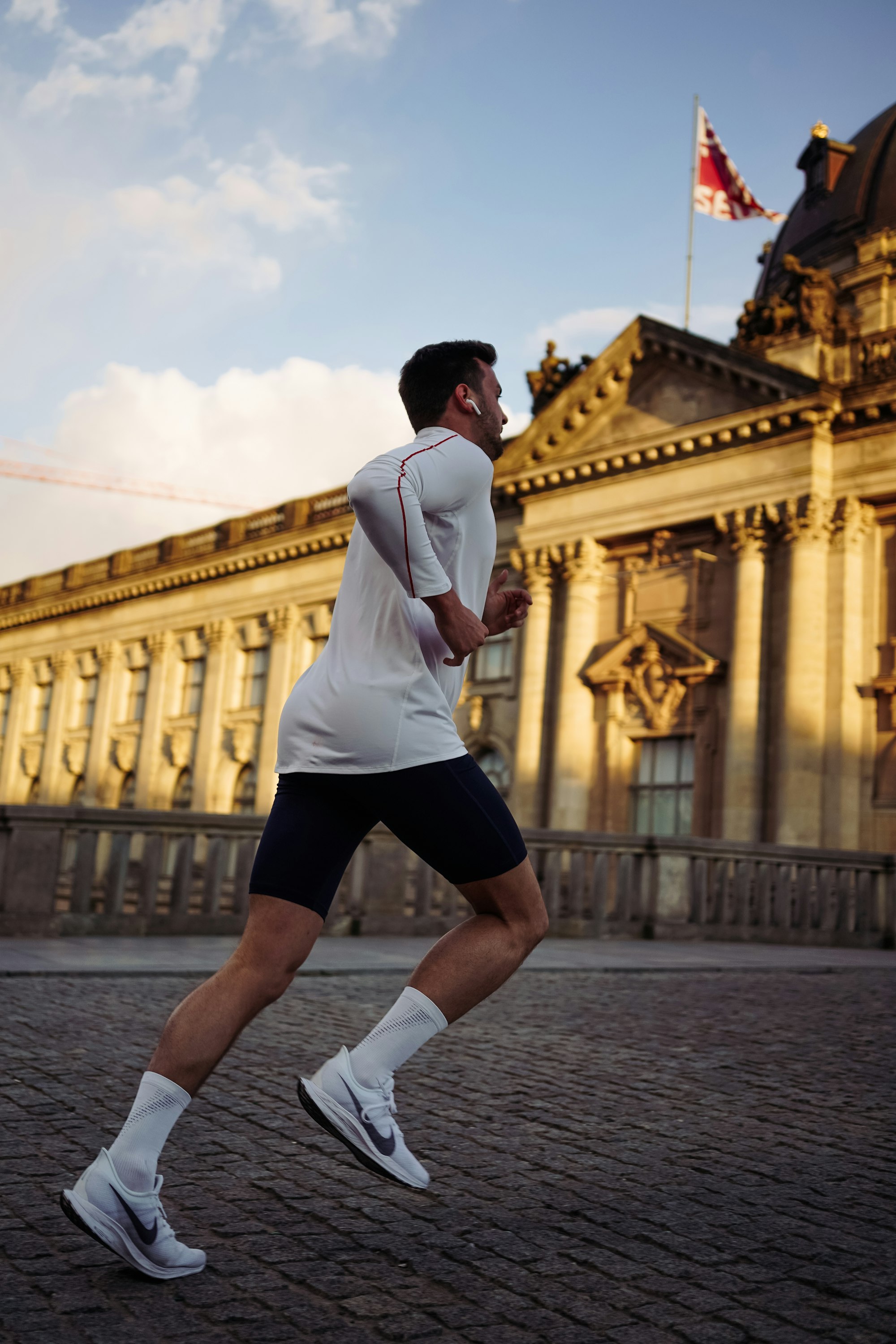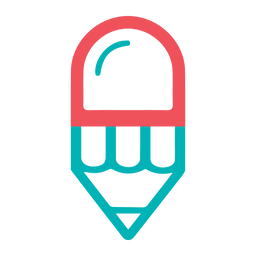The Most Effective Bodyweight Exercises
We'll break this list up anatomically by push, pull, legs, core, and cardio. Each section will have options for beginners and those with more experience. At the end of the article, there are some simple full-body workouts for you to try!

There are many ways to exercise and not all of them require fancy equipment, heavy weights, or breaking the bank. Today we're going to cover the best exercises that require no weights, can be done almost anywhere, and will get you guaranteed results when done correctly! We'll break this list up anatomically by push, pull, legs, core, and cardio. Each section will have options for beginners and those with more experience. At the end of the article, there are some simple full-body workouts for you to try!

PUSH: Chest, shoulders, and arms
1. Push-ups: Push-ups are potentially the BEST bodyweight workout for the upper body. They target the chest, shoulders, and triceps and also provide a ton of variety! You can do close-grip push-ups, wide-grip push-ups, A-frame push-ups, knee push-ups, incline push-ups, decline push-ups, negative push-ups, clapping push-ups, jumping push-ups, single-arm push-ups, and more! You genuinely can't go wrong here.
Beginners: If you can't do a push-up, no worries! Start by getting on your knees next to a bench or a table. From there simply lower yourself down and touch your chest to the table, then push back up. This is a version of an incline push-up and it will help you get your first push-up! The more vertical your torso, the easier it will be. Over time you can get closer and closer to parallel with the ground by placing your knees further from the table and eventually getting off your knees completely and onto your feet.

Advanced: If push-ups are easy for you, try these harder variations. Negative push-ups (4 seconds down, 1 second up) are great and really magnify the eccentric portion of the movement. You can also do handstand push-ups which involve kicking upside down with your feet on a wall which will really target the shoulders and triceps.

2. Dips: When it comes to bodyweight exercises, dips are hard to beat when it comes to targeting the arms! Dips can be split into "tricep dips" and "chest dips" and the difference is pretty small in execution but considerable in outcome.
Beginners: Start by sitting down with your back to a table or bench. From there, put your hands on the table behind you with your palms down and simply push your body up. The closer your feet are to the table the easier it will be! As you get better at these, you can straighten your legs with your feet further from the table which will require your arms to push up more of your body weight. This technique would constitute a "tricep dip".

You can do dips on a set of parallel bars as well. You can find parallel bars in many parks and a dip station at most gyms if you want to try these! Simply hold yourself vertically in between the bars, lower yourself down until the back of your arms are parallel to the ground, then push back up. As a beginner, you will likely need assistance with these in the form of a band or (depending on the height of the bars) you can place one foot on the ground and use it to help push yourself up. To make these into "chest dips" simply lean forward so that your body is no longer completely vertical, then hold that angle on the way up and down. This will greatly enhance the strain on your chest!

Advanced: As your arms and chest get stronger, you can try more advanced dip techniques. The first option would be to add weight using a belt or hold a dumbbell in between your feet. But since this is a weight-free zone, let's talk about some other methods! You can try L-sit dips where you hold your legs straight out in front of you while keeping your torso vertical. This will incorporate your abs into the movement! You can also do negative reps (like with push-ups discussed above) and focus on the eccentric portion of the movement. Lastly, you can try lowering your chest down towards one hand or the other (on parallel bars or a dip station) and alternate reps from side to side. This will increase the strain on each side of the body and make the movement harder without having to add any weight.

PULL: Back and arms
1. Pull-ups: It's hard to pick a bodyweight movement more important than pull-ups. They are probably the most beloved (and hated) movement on this list! They target multiple muscles in the back, but they're mostly used to work the latissimus dorsi (lats) and biceps.

Beginner: Pull-ups are hard. Many people aren't strong enough to perform them, but that doesn't mean that they can't be! There are 3 movements you can do to work your way up to your first pull-up. First, you can try inverted rows which are done by pulling your chest to a bar with your feet on the ground out in front of you. The more horizontal you are to the ground, the harder the movement!

There's also a jumping pull-up where you jump to a low bar and use your momentum to carry you to the top of the rep with your chin over the bar. You can then lower yourself down slowly to complete the rep. Lastly, there are banded pull-ups which involve putting a band around your feet or knees which will support some of your weight and make the movement easier. Over time you can use bands with less and less resistance!

Advanced: Once you can consistently do sets of 10+ pull-ups, you can try out some of the advanced variations! Similar to dips, you can perform L-sit pull-ups which will engage your core. You can also do chest-to-bar pull-ups where you touch your chest to the bar rather than just put your chin over it. Then there are bar muscle ups which involve pulling yourself up and over the bar, then pressing yourself up and locking your arms out.

LEGS: Quads, hammies, glutes, and calves
1. Squat: You might not think that bodyweight squats are challenging, but you'd be wrong! You don't need weight loaded on your back to make this movement worth doing. Don't believe me? Knock out a set of 50 air squats right now and tell me what you feel. Squats are fantastic because they target the quads, hamstrings, and glutes (3 large muscle groups) all with one movement!
Beginners: If you're just getting into air squats, start with your feet roughly shoulder width apart and squat down as low as you can comfortably go, then simply stand back up! Make sure to keep your weight in your heels so that you aren't coming up onto your toes. As you get better at these you should try to get deeper and deeper into your squat until your hips are at or below the level of your knees and your thighs are parallel to the ground.

Advanced: If you want to up the difficulty, try out pistol squats. These involve squatting down to below parallel on one leg while having the other leg out in front of you. This allows you to put all of your body weight onto one leg at a time which makes the movement much more difficult. It also works your flexibility, core, and balance!

2. Box Step-Ups: These are as effective as they are simple. Similar to squats, box step-ups work the 3 major muscle groups in your legs and also put a little more emphasis on your calves. For this movement, you'll need a bench, chair, table, or anything else strong enough to hold your weight.
Beginner: For this movement, you'll simply step up onto something sturdy and push yourself up until both feet are on the raised surface and your legs are straight. If you're struggling with these, start with a very low step. You can work your way up as you get stronger to taller and taller platforms!

Advanced: If you want to make this movement harder, turn them into box jumps! The higher the box the harder they will be. These require explosive energy and will also tax your cardiovascular system much more.

You can also do burpee box jump overs which involve jumping up to the box, stepping or jumping down to the other side, performing a burpee, and repeating. These will smoke your legs and really get your heart rate up! By the end of these workouts, you may also be questioning your sanity.

CORE: Abs and stability
1. Variety: There are SO many options for bodyweight exercises that target your core and abs. Rather than just list 2 for you to try, check out these videos which will walk you through a quick 7-minute ab workout with a variety of movements! You can find videos like this all over the internet, so feel free to mix it up. These are just some of my favorites. You can stick with following along to these videos or you can just incorporate these movements into your own workouts!
CARDIO: Anything that works the ol' ticker
1. Variety: Just like abs and core work, there are many ways to do cardio. Running, cycling, swimming, rowing, etc... Each of these categories deserves its own spotlight and we will be sure to cover them in future posts! For now, check out our past article on how to become a consistent runner on a busy schedule.

I can't express enough how important cardio is to your health and longevity. It's essential! This is why the sample workouts provided at the end of this post will all get your heart rate up. Check out how we know that being in better cardiovascular shape helps you live longer.

FULL-BODY WORKOUTS: Try these today!
So it's the first day of 2023 and you're looking to start off on the right foot. Look no further! Below are 2 full-body workouts for beginners and advanced athletes to choose from that will make sure you've set a tone for the year. They require no weights at all! If you can't do any of the movements, just scale them down to a version we talked about above. If you don't have access to a pull-up bar, just substitute pull-ups with a different movement. If you can't run, just walk or jog and please don't feel discouraged if these take you a long time to complete. They're meant to challenge you and it should feel difficult! Remember that when something is hard, you can be SURE that you're improving yourself while doing it. Have fun and feel free to post your times/scores in the comments below!
Beginners:
1. Perform 3 rounds of 10 of the following with as much intensity as you can:
- Air squats
- Sit-ups
- Push-ups
- Burpees
2. Run a quarter-mile followed by 40 air squats, 30 sit-ups, 20 burpees, and 10 pull-ups. Finish with another quarter-mile run.
Advanced:
1. Murph: This is a famous CrossFit hero workout! Perform the following for time, and add in a 20lbs weight vest if you're feeling good. You can split the sets apart (20x15 squats, 20x10 push-ups, 20x5 pull-ups) or you can complete each movement before moving on to the next.
- 1-mile run
- 100 pull-ups
- 200 push-ups
- 300 squats
- 1-mile run
2. Mary: Another great CrossFit workout! AMRAP stands for "as many rounds as possible".
AMRAP for 20 minutes:
- 5 handstand push-ups
- 10 one-legged (pistol) squats
- 15 pull-ups


